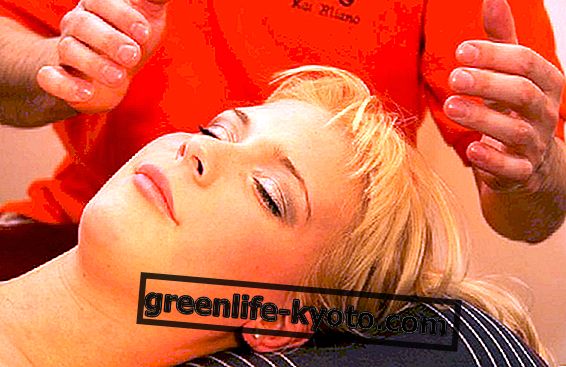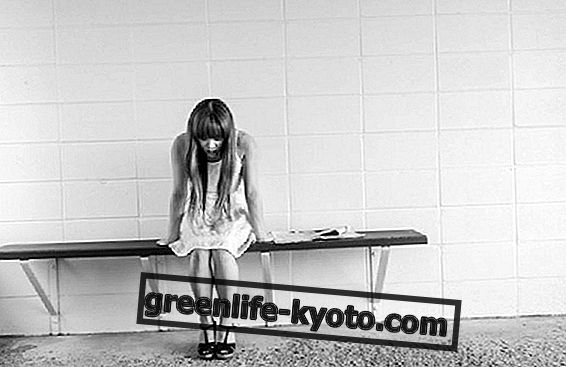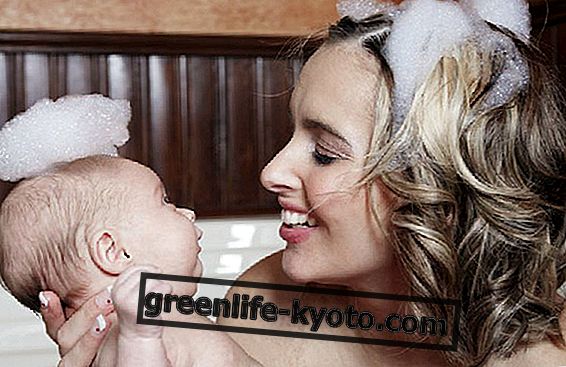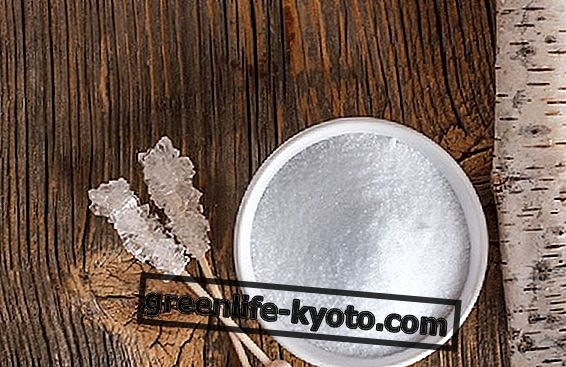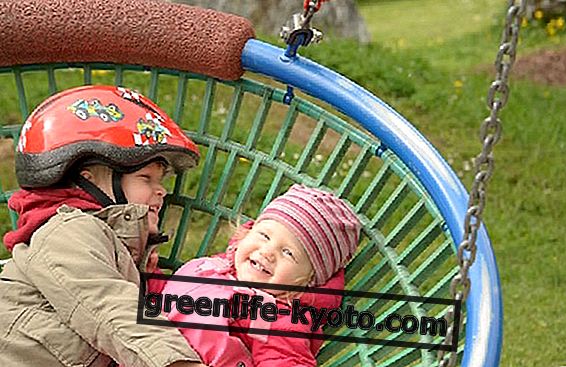
Summer and holidays should be a moment of joy for families with children: the school is over, the weather is milder and finally you are free to play outdoors. However, many summer activities can hide pitfalls or dangers, easily avoidable with the right precautions. From protection from insects, to the safe way to play in the park, from bicycle use to fireworks (widespread in the United States for the July 4th party): here are all the summer tips from the American Academy of Pediatrics for keep your family safe.
Safety against insects
- Do not use scented soaps, perfumes or hair sprays on children
- Avoid going to areas where insects naturally nest or gather, such as areas with pools of stagnant water, food left uncovered and gardens in full bloom.
- Where possible, eliminate stagnant water from your gardens, such as that of ponds or trays for watering birds. Check that the mosquito nets on the windows are well fixed and take care to repair any holes, so as to keep the insects away from the house.
- Avoid dressing the child with brightly colored dresses and floral prints.
- To remove a visible sting on the skin, gently pull it back with the help of a credit card or nail.
- Avoid combined repellent and sun-protective products, because the latter must be reapplied on children about every two hours while insect repellents must not be reapplied .
- When necessary, use insect repellents that contain DEET ( see note 3 at the end of the article ) to prevent the spread of insect-borne diseases. Ticks, for example, can transmit Lyme disease, and mosquitoes can transmit West Nile fever, Zika virus, Chikungunya virus and others.
- The AAP and the CDC (Centers for Disease Control and Prevention) currently recommend using a repellent containing DEET of 10 to 30%, for children over 2 months of age. DEET should not be used on children younger than 2 months .
- The effect of DEET is similar whether it is used at 10% or at 30%, but the duration varies. A repellent with 10% DEET provides protection for about 2 hours, while that at 30% protects for about 5 hours. Choose the lowest concentration that can provide coverage for the time needed.
- The concentration of DEET varies considerably from product to product, so it is important to read the label of any product you buy. Once indoors, children should be washed to remove repellents from the skin.
- As an alternative to DEET, picaridin ( see note 4 at the end of the article ) is available in the United States at a concentration ranging from 5% to 10%.
- When you go out in the evening or in other cases where there are many mosquitoes, cover the children with long-sleeved shirts, long pants and socks to avoid bites and stings.
Playground safety
- The playground should have safety tested mats or loose materials (rubber, sand, wood chips or bark) kept at a depth of at least 9 inches (6 inches for the shredded rubber). The protective surface should be installed for at least 6 feet (more in the case of swings and slides) in all directions from the rides ( see note 5 at the end of the article ).
- All tools must receive accurate maintenance . Hooks or protruding ends of the bolts can be dangerous.
- Swing seats must be made of soft materials such as rubber, plastic or canvas.
- Make sure that children cannot reach any of the moving parts that could pinch or intercept any part of the body.
- Never tie up, or allow children to tie ropes, jump ropes, leashes or other objects similar to park rides. If you see something related to the playground, remove it or call the playground operator to remove it.
- Make sure your children do not wear a helmet or any other object tied around their neck.
- Metal, rubber and plastic products can become very hot in summer, especially in direct sunlight.
- Make sure the slide is cold to prevent children from burning their legs.
- Do not allow children to play barefoot in the playground.
- Parents must supervise children when they are on the rides to keep them safe.
- Parents should never buy a trampoline or allow children to use it, even when they are under their supervision, to avoid serious injury.
- Surrounding the trampoline with a net provides a false sense of security and does not prevent all injuries that the trampoline could cause. Most injuries occur on the trampoline and not fall from it.
- If children are jumping on a trampoline, they must be supervised by a responsible adult, and only one child at a time should be on the trampoline; 75% of the injuries due to the use of the trampoline occur when more than one person is jumping at the same time.
- Homeowners should check that their insurance also covers damage due to the use of the carpet.
Bicycle safety
- The helmet should always be used to protect your child from serious injury. And remember, always wearing a helmet, you help children develop the habit of using it.
- Your child must wear a helmet every time he uses the bicycle, no matter if it is for a short ride or if he stays close to home. Many injuries happen not only on the street, but on the paths of the house, on the sidewalks and on the cycle paths. Children learn best if they observe adults. The best example is to wear the helmet yourself at every opportunity.
- When you purchase a helmet, look for a label or sticker stating that the helmet meets the safety standards of the Consumer Product Safety Commission (CPSC).
- The helmet must be worn so that it is level with the head and covers the forehead, without pointing forward or backward. The strap must be firmly secured with about 2 fingers of space between the strap and the chin. The helmet must be close to the head, but not too tight. The skin should move with the helmet when moving sideways. If necessary, the helmet padding should help improve grip.
- Do not push the child to ride a 2-wheel bike without the wheels until he is ready. Consider the child's coordination and his real desire to learn to ride a bicycle.
- Bring your child with you when you buy the bike so he can try it. The value of a properly mounted bike far outweighs the pleasure of surprising your child with a new bike. Buy a bicycle in the right size and not one that the child can use growing up. Bicycles that are too large can be particularly dangerous.
Safety when using skateboard, scooter, skates and Heelys shoes
- All children who use skateboards, scooters and skates should wear protective clothing ; helmets are particularly important for preventing and minimizing head injuries. Skaters should always wear helmets that meet the safety standards approved by the ASTM ( American Society for Testing and Materials International ) and that are designed and manufactured specifically to reduce the effects of skating risks.
- Communities should continue to develop special parks for skateboarding because this way there is a greater chance that safety will be monitored and ensured compared to ramps and jumps built for children at home.
- Heelys roller skates or shoes should only be used on trails or tracks and not on the road.
- Most injuries occur due to falls. The less experienced should move quickly only if they are able to slow down easily and should practice falling on grass or other soft surfaces. Before using the skateboard you should check the ground on which you will run to check for obstacles such as holes, stones or debris. Knee pads, elbow pads and wrist bands must always be worn.
- Do not let children use skateboards or scooters in the traffic and its surroundings.
- Children should never use skates alone . Children under 8 should be closely monitored at all times.
ATV (off-road vehicles)
- Boys who are too young to have a driving license should never be allowed to use ATVs. Children remain involved in about 30% of cases of death or first aid injuries caused by an ATV. ( see note 6 at the end of the article ).
- Since their nervous system and their judgment is not yet fully developed, ATV vehicles are particularly dangerous for children under the age of 16 ( see note 7 at the end of the article ).
- No double guide. Passengers are often injured when using ATVs. Most ATVs are designed to carry only one person : the driver. Passengers can make the off-road vehicle unstable and difficult to control.
- All ATV pilots should take a safety training course on the use of this type of vehicle
- All pilots must wear helmets, safety glasses, closed and resistant shoes and protective and reflective clothing. The best helmets are those designed for motorcycle use (not bicycle ones) and should have a safety visor to protect the eyes. The use of the helmet can prevent or reduce the severity of possible injuries.
- The ATV vehicles lack the safety equipment commonly found on cars and trucks designed for road use. Tires are not designed to grip the road surface because ATVs should not be used on paved roads. Parents should never allow night or road use of these vehicles.
- Flags, reflectors and lights must be used to make vehicles more visible.
- You should never drive under the influence of alcohol, drugs or even some prescription drugs . Parents should set a good example for their children.
- Young people should be discouraged from using any type of motorized two-wheeler on the road, even when they are the right age to do so, because they are inherently more dangerous than cars.
Safety when using the lawn mower
- Use only a mower that has the control to stop the movement of the blades when letting go of the handle
- Children under the age of 16 should not use lawnmowers. Children under the age of 12 should not use the lawnmower.
- Use sturdy and closed shoes when mowing.
- Before starting to mow the lawn, lift stones and toys to avoid injury from flying objects. The use of the mower must always be accompanied by devices for the protection of the eyes and hearing .
- Do not pull the mower back or mow in the opposite direction except in special cases and always check carefully that children are not behind you.
- Always switch off the lawnmower and wait until the blades come to a complete stop before removing the grass catcher or crossing gravel paths, roads or other areas.
- Do not allow children to use lawn tractors, not even passengers.
- Keep children away from the garden while mowing the lawn.
- Drive up and down the slopes and not sideways to prevent the mower from tipping over .
- Keep all safety devices in operation at all times.
- If children need to be near mowers, they must wear protective glasses made of polycarbonate at all times.
Safety when using fireworks
- Fireworks can cause severe burns, blindness, scars and even death ( see note 1 at the end of the article ).
- Even some types of fireworks that are considered safe, such as pyrotechnic stars, can reach temperatures above 1000 degrees Fahrenheit ( see note 2 at the end of the article ) and cause burns to those who use them and those close to them.
- Families should participate in setting up fireworks run by professionals together with the community, rather than using fireworks at home alone.
- The AAP ( American Academy of Pediatrics ) recommends prohibiting the sale to the public of all fireworks, including those that can be purchased by mail or via the internet.
Source: Summer Safety Tips: Staying Safe Outdoors
NOTE
1. The use of fireworks is particularly appreciated in the United States, especially in the summer, on the occasion of the 4th July American Independence Day. On this occasion, families often rely on DIY to celebrate, buying fireworks and fireworks in stores and online.
2. The Fahrenheit grade is the temperature measurement unit used in the United States and Belize. 1 degree celsius equals 33.8 degrees fahrenheit. Therefore, in this case, 1000 degrees fahrenheit equals to around 538 degrees Celsius.
3. Diethyltoluamide (DEET) is an oily substance contained in insect repellents, odorless and heat resistant.
4. Picaridin, also known as icaridine (KBR 3023) is a mixture of 4 stereoisomers used in mosquito repellents and insects in general.
5. The thumb is a unit of length measurement widely used in the United Kingdom and the United States. The foot is a multiple of it and is equal to 12 inches. One inch equals 2.54 cm. Therefore, in the article, 9 inches equals to 22.86 cm; 6 inches is 15.24 cm; 6 feet is about 183 cm.
6. ATVs (all-terrai vehicles) are vehicles built to travel on rough and difficult terrain, away from normal paved roads, with limited speed. An example is the quads.
7 Information valid for the United States where the minimum age to apply for a driving license is 16, not 18 as in Italy.




